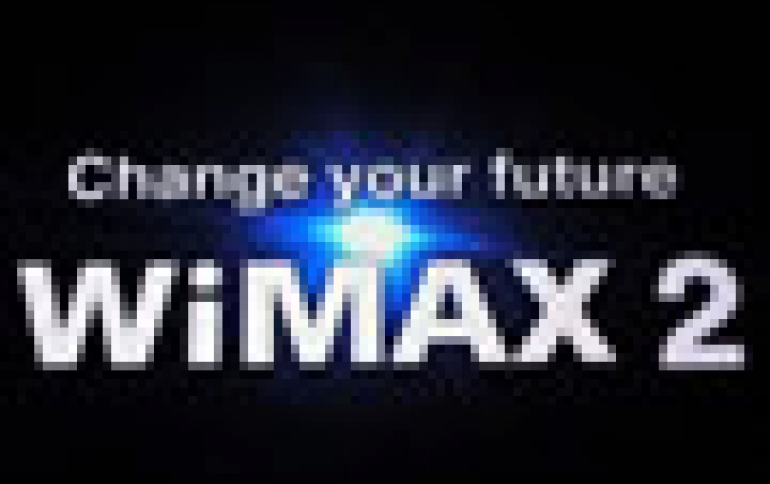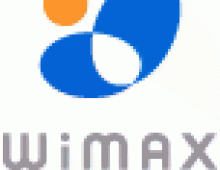
Wimax 2 Field Trial Demonstrates 150Mbps Wireless Transmission
Japanese UQ Communications Inc. has achieved a downling transmission of over 100Mbps in the world's first WiMAX 2 field trial under mobile environment held around Otemachi, Chiyoda-ku, Tokyo, with the cooperation of Samsung.
WiMAX (Worldwide Interoperability for Microwave Access) is a telecommunications
protocol that provides fixed and mobile Internet access. The bandwidth and range
of WiMAX make it suitable for providing portable mobile broadband connectivity
across cities and countries through a variety of devices, a wireless alternative
to cable and DSL for "last mile" broadband access, data, telecommunications
(VoIP) and IPTV services.
UQ got an experimental license of WiMAX 2 system using 2.6GHz radio frequency last month and today announced that it has succeeded a downlink transmission of 150Mbps at a channel width of 20MHz, close to the 165Mbps theoretical limit of the new technology.
At CEATEC Japan held in October, 2010, UQ has also succesfully demonstrated WiMAX 2 showing over 300Mbps transmission for downlink in a wired environment at a bandwisth of 40MHz.
The current WiMAX revision provides up to 40 Mbit/s. The WiMAX Forum Release 2 (WiMAX 2) is based on the new IEEE 802.16m standard and it is expected to offer up to 1 Gbit/s fixed speeds. Standardization of IEEE802.16m has been completed in March 2011 and WiMAX 2 has been standardized in WiMAX Forum in May 2011. IEEE 802.16m has been proposed as IMT-Advanced technology from IEEE and Japan to ITU (International Telecommunication Union), and will be approved next year. Development of WiMAX 2 systems for commercial use has been in progress in parallel with its standardization activity.
The IEEE 802.16m standard delivers these high speeds through a combination of using smart antenna technology and using a multi-channel approach. Besides the speed boost, WiMAX 2 is not expected to propagate any farther than current WiMAX technology that covers around 31 square miles per access point.In order to increase the capacity of the new WiMAX 2 network, UQ Communications plans to reduce the size of the network's cell' by adding more base stations, improve the efficiency of spectrum usage by introducing new technologies. Applying the bring multiple antenna support through 4x4 MIMO technology, brings potential benefits in terms of coverage, self installation, power consumption, frequency re-use and bandwidth efficiency. The result is an increased bandwidth of 20MHz, a maximum communication speed of 165Mbps downlink and 55Mbps uplink speeds four to five times the current WiMax implementation. In addition, UQ said that the network will offer uninterupted commucications with vehicles running at speeds of up 350Km/h, meaning that WiMAX 2 could be used even in Japan's high speed trains.
UQ plans to start WiMAX 2 service to the market in early 2013.
Future plans for WiMAX 2 also include speeds of up to 330Mbps in the 40MHz band using WiMAX 2.
The biggest WiMax supporter in the States, Clearwire, has said it plans on testing out 802.16m sometime next year.

UQ got an experimental license of WiMAX 2 system using 2.6GHz radio frequency last month and today announced that it has succeeded a downlink transmission of 150Mbps at a channel width of 20MHz, close to the 165Mbps theoretical limit of the new technology.
At CEATEC Japan held in October, 2010, UQ has also succesfully demonstrated WiMAX 2 showing over 300Mbps transmission for downlink in a wired environment at a bandwisth of 40MHz.
The current WiMAX revision provides up to 40 Mbit/s. The WiMAX Forum Release 2 (WiMAX 2) is based on the new IEEE 802.16m standard and it is expected to offer up to 1 Gbit/s fixed speeds. Standardization of IEEE802.16m has been completed in March 2011 and WiMAX 2 has been standardized in WiMAX Forum in May 2011. IEEE 802.16m has been proposed as IMT-Advanced technology from IEEE and Japan to ITU (International Telecommunication Union), and will be approved next year. Development of WiMAX 2 systems for commercial use has been in progress in parallel with its standardization activity.
The IEEE 802.16m standard delivers these high speeds through a combination of using smart antenna technology and using a multi-channel approach. Besides the speed boost, WiMAX 2 is not expected to propagate any farther than current WiMAX technology that covers around 31 square miles per access point.In order to increase the capacity of the new WiMAX 2 network, UQ Communications plans to reduce the size of the network's cell' by adding more base stations, improve the efficiency of spectrum usage by introducing new technologies. Applying the bring multiple antenna support through 4x4 MIMO technology, brings potential benefits in terms of coverage, self installation, power consumption, frequency re-use and bandwidth efficiency. The result is an increased bandwidth of 20MHz, a maximum communication speed of 165Mbps downlink and 55Mbps uplink speeds four to five times the current WiMax implementation. In addition, UQ said that the network will offer uninterupted commucications with vehicles running at speeds of up 350Km/h, meaning that WiMAX 2 could be used even in Japan's high speed trains.
UQ plans to start WiMAX 2 service to the market in early 2013.
Future plans for WiMAX 2 also include speeds of up to 330Mbps in the 40MHz band using WiMAX 2.
WiMAx |
WiMAX 2 (20MHz channel) |
WiMAX 2 (40 MHz channel) |
|
Download speed |
40 Mbps |
165 Mbps |
330 Mbps |
Upload speed |
10 Mbps |
55 Mbps |
110 Mbps |
Max moving station speed |
120 KM/h |
350 KM/h |
350 KM/h |
Duplexing method |
TDD: 10MHz |
TDD: 20MHz |
TDD: 40MHz |
MIMO |
2 x 2 |
4 x 4 |
4 x 4 |
Modulation type |
64 QAM 5/6 |
64 QAM |
64 QAM |
The biggest WiMax supporter in the States, Clearwire, has said it plans on testing out 802.16m sometime next year.




















